A new lead actress panel, this time for the Los Angeles Times
An eclectic group of actresses behind some of the year’s most intriguing films, including rising stars and established performers alike, gathered earlier this month to talk with The Envelope about their films, their personal approaches to work, and their industry.
Participating in the conversation were Cate Blanchett, from the 1950s lesbian love story “Carol”; Brie Larson, from the imprisonment drama “Room”; Helen Mirren, from the art saga “Woman in Gold”; Charlotte Rampling, from the marital drama “45 Years”; Saoirse Ronan, from the immigrant tale “Brooklyn”; and Lily Tomlin, from the intergenerational comedy “Grandma.”
Here are edited excerpts from the free-flowing conversation moderated by Times film writers Rebecca Keegan and Mark Olsen in which the actresses discuss the roles that hit too close to home, the secret alchemy of working with directors and how they know when to say “no.”
Keegan: Helen, you recently played gossip columnist Hedda Hopper in “Trumbo.” We’re in the L.A. Times building, which is where she worked. How do you think she would handle an actors roundtable?
Mirren: She’d certainly be wearing a hat … the difference would be that none of us would be relaxed because we would know that we had to obey not just what Hedda was requiring of us, but what our studios were requiring of us. I presume we’re all much, much freer than any of those actresses.
Blanchett: No, I was bought many, many years ago. Cheaply. 50 cents.
Keegan: It seems like there is more of an expectation of actors to share of their personal lives now, perhaps, than there was then. Saoirse, how do you strike that balance between wanting to be able to preserve something for yourself and also share a little bit of who you are?
Ronan: I started when I was very young. Even from the age of 12, the only thing that was important was actually the film, and that was the only thing that I was ever going to talk about. Naturally, as actors, we’re very, very open, we’re very emotional and so it’s easier to kind of be expressive…. But for me it’s important to protect my life outside of work.
Olsen: Cate, do you find that living in Australia, as you do, that that allows you some distance from Hollywood, and maybe the machinery of celebrity?
Blanchett: I’ve been running the Sydney Theatre Company with my partner for five years … and because it was a public position you’re asked to … be part of the national conversation. I found that very confronting.
Mirren: Who here has a Twitter account?
Larson: I just got one three months ago.
Blanchett: Is that because of the gorilla? [Larson is currently shooting “Kong: Skull Island.”]
Larson: No, it was actually, weirdly, my choice. I never had social media and then suddenly I felt like … any time I did tap into the Internet … it was so much negativity — and nothingness — I thought, well, perhaps I can be part of a group that’s maybe pushing it in a different direction.
Ronan: I think you can feel the pressure, as well, from social media to, present yourself in a certain way, and because of that, you lose touch of what individuality actually means. You see, on things like Instagram and Facebook and Twitter, when it’s used in the wrong way, your representation of yourself is completely warped. I know lots of people around my age who have kind of lost touch with who they are, because they spend so much time presenting their every day life in unrealistic ways.
Blanchett: I remember, years ago when I first came to Los Angeles, a friend of mine, a female director, was wanting to make a very small, low-budget film, and she was presented with a list of actresses that she wanted to approach, and the studio executive rolled out this piece of paper with a calendar of events, and there was this chart with a list of actresses and the tick against what events they’d been to.
Ronan: Whoa.
Larson: That exists?
Blanchett: They were wanting to cast these women based on their photograph-ability. Now there’s a request that you open yourself to social media so that your profile is high…. You’re a commodity, you’re a brand, and that you’re expected, now, to brand yourself … it’s a changing landscape.
Keegan: Lily, in “Grandma” you are wearing your own clothes and driving your own car —
Tomlin: Right, that was budgetary.
[Laughs]Keegan: That’s a part that was written expressly for you. How do you think about the difference between the character you’re playing and the real you?
Tomlin: I’m sort of late to that kind of starring role. I’ve been a co-star and so on, but I’ve rarely led a film. It was very low budget, and [director] Paul Weitz was a friend; I’d done “Admission” with him…. I’m known for creating these very extreme characters, very different one from the other, and different voices and everything, not that I didn’t approach them as an actor — I did, and I do — but this movie, it just rolled off my back. I thought, “Well, maybe I’ve tried too hard in the past, to be a different person.”
[Laughs]Olsen: Charlotte, your director on “45 Years,” Andrew Haigh, said that he liked the idea that both yourself and your co-star, Tom Courtenay, that the audience would have all these memories of earlier films the two of you had done, that in thinking about this couple at their 45-year anniversary, that the audience would have these images of you. Did that affect your performance, or how you saw the movie in any way?
Rampling: You can’t not bring who you are to a role. You can’t efface work that you’ve done … there is an identification that people will automatically make throughout…. They do, as we grow up and grow on through films, they follow us…. Tom and I started almost exactly the same time in the ’60s in England, as actors…. We didn’t necessarily know each other very well … but we knew each other because of the journey that we’d had.
Blanchett: It’s the difficulty of returning to a place that you know inside out and playing a role that is really enmeshed with your own identity. There’s a challenge in that…. The membrane between you and the character is so thin.
Ronan: It’s terrifying…. To come along and be so used to playing somebody else completely different to you, and feel like … you’re acting, you’re working, you know. And with [“Brooklyn”], I couldn’t get my head out of the fact that I was feeling all these things every day that this person felt, you know? It takes your head a second to manage all of those emotions. I felt completely out of my depth for the first little while.
Larson: I had the same thing with “Room.” It wasn’t until a month before we started shooting — and I had spent eight months prepping for it and doing all of these ridiculous things to get ready, and then I decided to just take a month of just silence, because she’s trapped in this space for seven years, so I thought, “Why don’t I just take a month of not leaving the house and see what happens?” — and I remembered that when I moved to Los Angeles at 7 years old, it was me and my mom and my little sister, we moved into a studio apartment in Los Angeles, not much bigger than “Room,” in the movie. We had no money, we were living off of instant noodles — once we started shooting, I woke up in the middle of the night, and I realized that my father had asked for a divorce right before we left, so we moved there not knowing if we had the money to go on. My mom had no idea what she was going to do; her life was completely uprooted. And yet, she created this world for me and my sister that was so rich, so full of imagination, and it gave me chills when I realized that I was gonna have the opportunity, in a month from now, to relive my childhood from my mother’s perspective…. I just felt like every day I was just on my knees asking my mom for forgiveness. I just could not believe the amount of love and the amount of strength that she had in order to get through that.
Ronan: I realized that “Brooklyn” was my mom’s story, this story about a young girl who becomes a woman, and who makes a choice that’s right for herself … and that’s what my mom did too, you know? This job came to me just like it came to you. In order to kind of celebrate our parents, you know, or our moms.
Blanchett: With some roles, in both of those films, they seem so particular that, that they’re so much themselves, they’re not made from any formula or any cookie-cutter thing — but they’re so unique that they somehow have the ability to tap into a universal experience.
Keegan: Helen, when you’re playing a person who is real, as you do in “Woman in Gold,” do you go through a similar kind of process?
Mirren: There’s the impersonation side of playing a real character and then the storytelling side of playing a real character. I found with Maria that it was the reading and the research that was actually more valuable than watching her. I knew I didn’t look anything like her. That’s a problem with playing a real-life character, is you can only ever be, if you’re lucky, 65% of what they are … so you have to sort of look at it from a different angle. I found an incredibly liberating thing when I played the queen, because I was tortured by it before I started, terrified and tortured. And then I suddenly thought of it as a portrait. Portraits have been painted of her many, many, many times, and I thought, “I’m just another artist painting a portrait, and it’s gonna have as much of me in it as any portrait does … I found that incredibly liberating. And then I felt the same with Maria.
Olsen: Cate, you had a different experience with the film “Truth,” where you’re playing journalist Mary Mapes. She’s a living person that you had access to — you had a book that she recently had written — how does that sort of access impact your performance?
Blanchett: I met Mary…. And we Skyped and at a certain point, I think both she and I thought, “We have to stop this,” because it was a very particular truncated moment of crisis in her life; it’s not a biopic. She was at the center of this terrible media storm. She’s hilarious and vivacious and vital, but this particular moment in her life was fraught and confronting, and she was in free fall. You try and pepper all of those things that are kind of inconsequential and almost invisible for an audience. You have to take a deep breath and say, “I’m going to disappoint people who know her” and if you play someone who’s well-known it’s even worse…. Playing Katharine Hepburn, I had to say to myself, “I’m going to disappoint millions of people but Martin Scorsese has asked me to do this, so I’m going to give it my best shot.”
Keegan: Only about 4% of studio movies are directed by women. Helen, is there anything that, in your position, you can say or do about that?
Mirren: I’m so on both sides of the fence. On the one hand, I think it should just be how brilliant, how talented you are — but then you can’t get to be talented if you’re not given an opportunity to work. If you’re never given the experience of making a film, how can you get to be a great filmmaker?
Blanchett: Well, say, for example, the fellow who’s directing your amazing King Kong movie. He had that extraordinary film that came out a few years ago [“The Kings of Summer”], but he’s not widely known, he doesn’t have a track record for producing big-budget action films, but he’s got this huge film. Without those track records in place, would someone be prepared to take a risk [like that] on a woman? And if, God forbid, it didn’t work, and how many films have I been in that haven’t worked for one reason or another, not necessarily because of the quality of the film — if a woman does that it’s like, “Well, see.”
Larson: Why are we talking about women like they’re aliens? Like, we’re talking about them like it’s a niche genre. It’s like, “Some zombie movies did good. You think we’re gonna be making zombie movies forever?” We’re talking about half of human beings…. It’s unbelievable to me at this point, that there is an entire perspective, the female perspective … and we’re missing one half completely. At least for me in my point in my career, the director’s attached, and then I meet, and if they want to work with me then that’s how it goes. But I also can’t just say, “There’s nothing I can do.” I think having a conversation about it is at least the beginning of it.
Mirren: I’ve always said we should all work toward getting great roles for women in real life, because as night follows day, the roles follow in drama. And to work on the visibility of women, behind the camera absolutely, for example, but also in all of the professions, in politics, business, science, in all of those roles. The three of us older women here, we’ve seen an amazing change, haven’t we? I seem to feel I’ve witnessed an incredible change.
Rampling: That’s for sure.
Larson: But then men sort of had a head start on us.
Mirren: They sure did, by a few billion years probably, absolutely.
Ronan: I think what needs to change is having more films that consist of female interaction. We’re all women here. We’re having an intelligent conversation…. You see it in “Brooklyn” and we’re so proud of it, that there’s so many scenes that just consist of women, and it’s entertaining, and it’s funny, and it’s heartfelt, and it’s sincere, and hopefully people learn something from it. I think, in that way, our mind-set needs to change.
Blanchett: But also, when I saw “Brooklyn,” half the audience were men, half were women — and both enjoyed it. And it’s the same with “Carol.” It’s about two women falling in love but there’s a universality to it, and there’s something that somehow only women directors can direct films that have women protagonists, and only women will go see them. It’s not some niche experience … it’s a human experience. “Hamlet” is one of the great plays and I feel it speaks directly to me, and yes it’s a male protagonist but it’s got an everyman quality to it. Women can speak to all of humanity…. The conversations are more creative when there’s many voices.
Mirren: We have to teach 22-year-old-men that fact. That’s the only problem.
Olsen: Lily, all through your career, whether from when your variety show, or a movie like “Nine to Five,” even a movie like “Grandma,” what do you see the relationship being between the social current and the message of the work you’re putting out?
Tomlin: Oh, yes, absolutely, as long as it’s human…. Not politics in some traditional sense, but has, the sensibility, expresses progressive ideas, yeah.
Blanchett: It’s a provocation, you know, your work is so provocative.
Tomlin: Oh God, I love hearing that from you.
Keegan: Did you think of “Carol,” at all, as a provocation?
Blanchett: If the film had been made 10, 15 years ago, I think it would’ve been viewed — even if it had been made the same frame by frame — it would’ve been viewed through a much more political prism. It probably would’ve been seen as more provocative. I think it’s timely. I focused on the relationships and the human aspect of the story, because you can guide an audience, but you can’t make them have the conversation, you can’t tell them what to think about it. And that’s what I find really exciting about acting, and what I find tricky about being in film — it’s not till someone stops you in a supermarket and tells you they either hated it or liked it [laughs] that you necessarily know that people have even seen it. The [box office] figures don’t tell you whether — they might’ve bought a ticket, but did they walk out? [Laughing] You know, you don’t know that.
Larson: Ah, I will tell you, that’s one thing that Twitter does do.
Blanchett: Really?
Larson: I know exactly when the movie’s getting out, and I get a flood. And that’s the thing that’s really interesting, and you get very personal responses.
Blanchett: But there’s nothing you can do about it. You see, this is the thing. This is what I find so difficult…. I did a play where I had an opening monologue of 20 minutes, and we hadn’t run the show — it was a really complicated show — I hadn’t run the show before the first preview. First preview, 100 people walked out. I went, “OK.” Next night, 70 people walked out…. Opening night, no one walked out. I could do something about it. Whereas, like, you find out on the Twitter feed that it’s trending like, what can you do?
Larson: Most of my friends are musicians and they’re baffled by what we choose to do. They’re, like, “Wait a second, so you don’t edit your own stuff? You don’t get to choose what the poster is?” For us, our job is just to give everybody in post-production all of the colors to paint with later.
Blanchett: But that’s why it’s so great to have that — I mean, we definitely had with [“Carol” director] Todd Haynes, it was Rooney [Mara] and Todd and I together. He was inside and alongside, and throughout the thing, so you think, well, “OK, we’ll do this five different ways because I know that when you get into the editing room, you will make a really great decision.”
Mirren: That’s why that moment of getting into bed with, or marrying, your director, that moment when you say, “OK, let’s go ahead,” it’s such an important moment.
Rampling: It is, it’s complete, the word is “surrender.” You have got to surrender.
Blanchett: Yes, you surrender but it’s not a passive surrendering. It’s like having great sex. You don’t know who’s leading…. And that’s where you have to be a little bit brave. You make an offer — and you go, “OK, that was the wrong way —” But it’s not often until you’ve done it the wrong way, but you think, “OK, it’s not that terrain, it’s that terrain.”
Keegan: How do you know when to say no?
Blanchett: In terms of the creative conversation, I think it’s always better to say, “Maybe.” Or “Why?” OK, that’s a good reason to do that. Let’s try it.
Rampling: It’s never “no.” “No” is useless in creation.
Mirren: Well, I’ve said no. I’ve said, “No, I’m not doing that.” It’s usually, it was related to — I felt that the writer or the director was demeaning women. I felt it was demeaning, or one-dimensional, or something like that. It would get my goat and I’d say “no.” But I have done a lot of very [laughing] demeaning things as well, incidentally. The people out there think, “What about that being nude in a van full of dead meat? That was fairly demeaning!”
[Laughs]Blanchett: Oh, that was extraordinary.
Larson: You did that?
Mirren: [Laughing] I did, I did, I did. I had to get very drunk to do it. Well, you know, it was art, that’s the thing.
 Welcome to Cate Blanchett Fan, your prime resource for all things Cate Blanchett. Here you'll find all the latest news, pictures and information. You may know the Academy Award Winner from movies such as Elizabeth, Blue Jasmine, Carol, The Aviator, Lord of The Rings, Thor: Ragnarok, among many others. We hope you enjoy your stay and have fun!
Welcome to Cate Blanchett Fan, your prime resource for all things Cate Blanchett. Here you'll find all the latest news, pictures and information. You may know the Academy Award Winner from movies such as Elizabeth, Blue Jasmine, Carol, The Aviator, Lord of The Rings, Thor: Ragnarok, among many others. We hope you enjoy your stay and have fun! 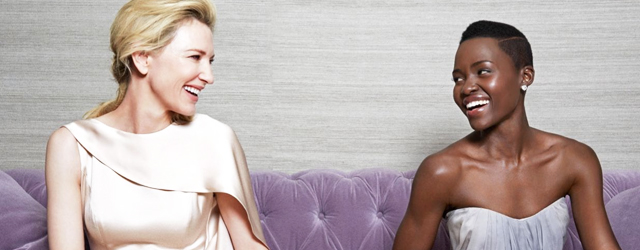
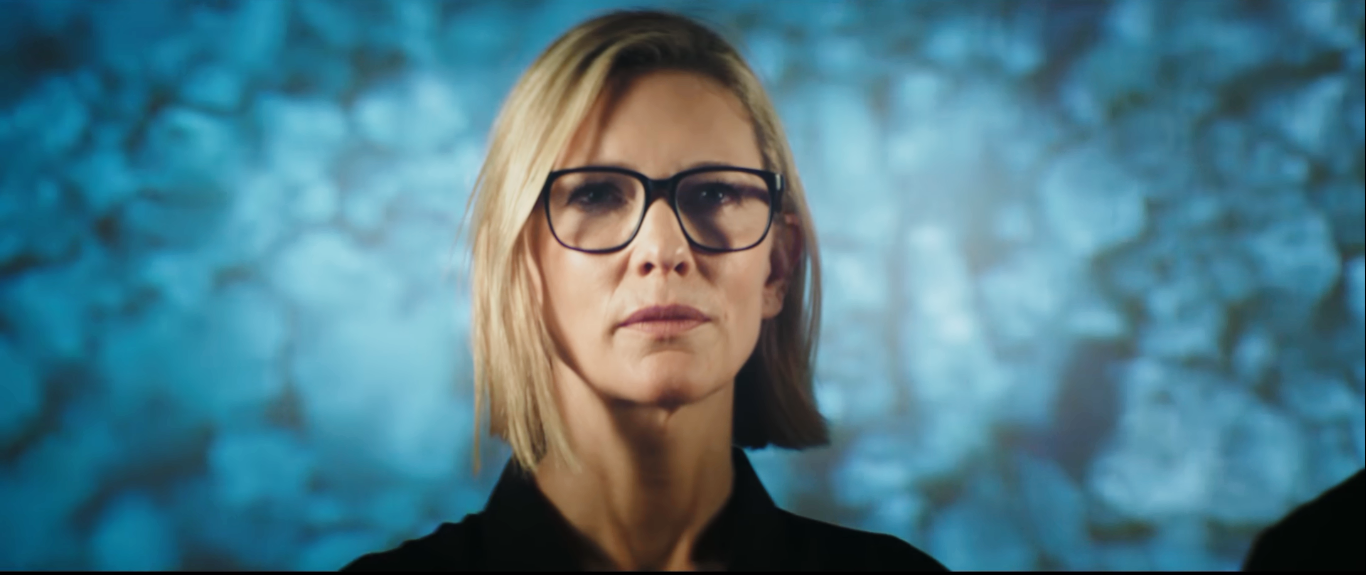
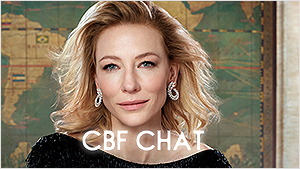
 A Manual for Cleaning Women (202?)
A Manual for Cleaning Women (202?)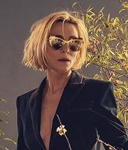 The Seagull (2025)
The Seagull (2025)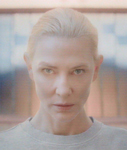 Bozo Over Roses (2025)
Bozo Over Roses (2025) Black Bag (2025)
Black Bag (2025) 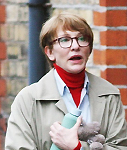 Father Mother Brother Sister (2025)
Father Mother Brother Sister (2025) 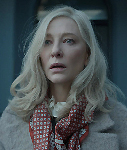 Disclaimer (2024)
Disclaimer (2024) 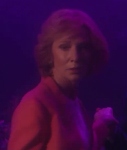 Rumours (2024)
Rumours (2024) 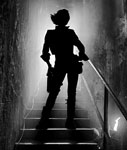 Borderlands (2024)
Borderlands (2024) 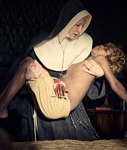 The New Boy (2023)
The New Boy (2023) 











